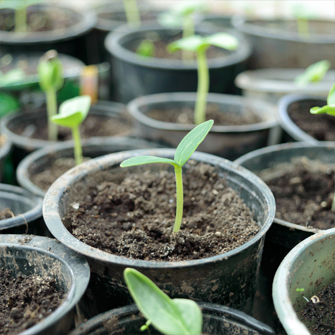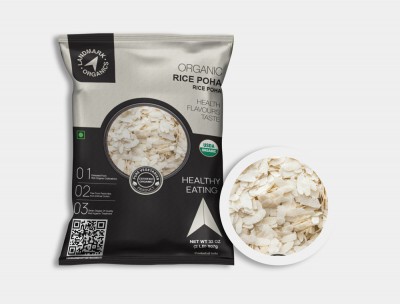Rice poha or Flattened rice is rice
which is flattened into flat, light, dry flakes, originating from the Indian
subcontinent. Rice is parboiled before flattening so that it can be consumed
with very little to no cooking. These flakes of rice swell when added to
liquid, whether hot or cold, as they absorb water, milk or any other liquids.
The thickness of the flakes varies between almost translucently thin (the more
expensive varieties) to nearly four times thinner than a normal rice grain. It
is also called "beaten rice", not to be confused with poha, a
Central-West Indian dish prepared using this flattened rice as the key
ingredient. This easily digestible form of raw rice is very popular across India,
Nepal and Bangladesh, and is normally used to prepare snacks or light and easy
fast food in a variety of Indian cuisine styles, some even for long-term
consumption of a week or more.
Samay
baji(Newar) : Beaten rice is mixed with variety of delicacy including egg.
fish. meat, potato, Choila(Newari dish), Beans, fries garlic and ginger, Bara.
It is one of the main dishes eaten in various special occasion.
- Avil Nanachathu also called Aval
Kuthirthathu (Kerala): Beaten rice is mixed with milk, sugar, ground
coconut and banana pieces. Peanuts or cashews may be used.
- Avil Vilayichathu (Kerala): Beaten
fried in ghee and mixed with jaggery, dal, cashews, peanuts and ground
coconut.
- Dahi Churaa (Bihari, Nepali): Beaten
rice mixed with ripe banana, yogurt, and sugar. Although an
"anytime" snack, it is also traditionally eaten by farmers
during the rice planting season in Nepal.
- Dhau Baji (Newar): Beaten rice is
dry roasted in a pan, then mixed with yogurt and sugar.
- Chindé'r pulao: A snack prepared by
immersing the rice flakes in cold water, drying them, and then preparing
pilaf-style with nuts, raisins, black pepper, green chillies, and salt and
sugar to taste. This is very popular as a breakfast or evening dish in
families, and may not be available in any stores or restaurants.
- Chindé bheja: Flakes are immersed in
a bowl of water and flavoured with lime juice, salt, sugar, and black
pepper.
- Chuda kadali chakata (Odisha):
Washed beaten rice is mixed with milk, mashed ripe bananas, grated
coconut, sugar or jaggery. A traditional breakfast meal eaten by Odias.
- Chuda Kadamba(Odisha): Firstly after
heating ghee in a pan, cashew, raisins are also fried with it. Beaten rice
or chuda is ground along with adding cardamom, sugar, grated coconut,
ghee, cashew & slight milk. Small balls/ladoo are made from the dough
with ghee, after refrigerating it's consumed.
- Bajeel Ogarne or Avalakki
Oggrane ( Karnataka): Beaten rice
is seasoned with curry leaves, mustard seeds, gram, peanuts, oil, and red
chillies. Optional add-ins like grated coconut, onion and coriander leaves
are also permissible. Served hot.
- Gojju avalakki or Huli avalakki
(Karnataka)
- Beaten rice with curds: Beaten rice
is soaked in water and then sieved. Curd is added with table salt, and
eaten with mango or lemon pickle.
- Kanda Pohe : Small pieces of boiled
potato, onion, mustard seeds, turmeric and red chilli are seasoned and
mixed with soaked and sieved beaten rice, and served hot. It is also
served with Tarri (chickpea and tomato curry) and seasoned with Chivda,
known as Tarri Poha.
- Dadpe Pohe : Thin or
medium-sized beaten rice is mixed with fresh coconut, grated green
mangoes, chilli powder, and coriander. Then it is seasoned with salt and a
fried mixture of peanut oil, mustard seeds, turmeric, and finely chopped
onions. Instead of raw mango, lemon can be used.
- Dahi Chuda: Beaten rice is cleaned
with water to make it slightly soft, then yogurt and jiggery (sometimes
sugar also) is added. This way of eating flattened rice is popular in
Bihar and Assam and it is eaten as the first meal during festival of Mag
Bihu in Assam and Makar Snakranti.
- Egg Pulau (Nepali): Spicy omelette
preparation is whisked with raw and dry flattened rice and cooked in a pan
in a similar way to an omelette. The almost-cooked egg pulau is mashed and
left to cook, covered, until it turns red in colour.
- Poha Jalebi: This is the most famous
breakfast across the Malwa region of Madhya Pradesh especially in Sagar,
Indore, Ujjain, Ratlam, Mandsaur, Bhopal, Hoshangabad.
- Kharbujache Pohe. Beaten rice with
muskmelon.
- Ful (egg) Chiura (Nepali): Common in
Kadmandu households, flattened rice
is fried in oil in a deep pan and salt is added. When the flattened rice
turns golden/red, an egg is poached on top of it and covered with the rice
until it has cooked.
- Theek (spicy) Phovu with coconut and
hing (Konkani): This is made with beaten rice (phovu) by adding a blended
mixture of coconut flakes, hing (asafoetida), salt, green chillies and
sugar to the softened phovu with 2 teaspoon of coconut oil.
- Flattened rice is made by Cambodians
during Ak Am Bok (around the fourth week of November) and is eaten with
bandanna fruit.
- It
provides the benefit of strong immunity as per Ayurvedic medicine.
- No
cholesterol and trans fat
- Authentic organic
products. Free from artificial fertilizers, colors, flavors and
preservatives
- We collect the
foods directly from the Indian farmers.
- Products are free
from chemicals and cultivated under traditional treatment.
- We ensure the purity of this product with vacuum pack or bag
and maintenance also make sure that it is free from impurities and
contamination.

